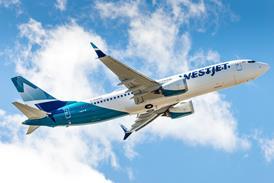Vladimir Karnozov/MOSCOW
The Russian defence ministry has issued a reworked specification for a fifth-generation fighter, designed to be Russia's counterpart to the US Joint Strike Fighter programme.
The revised specification calls for a 20t-class fighter with a low signature, "super agility", and the ability to cruise at supersonic speeds.
Although a draft specification was handed over in 1998, the defence ministry has considerably reworked it to reflect recent developments and to take account of NATO missions against Yugoslavia in 1999. The LFI (the Russian acronym for lightweight frontline fighter) designation is now rarely used and likely to be changed.
Russian air force commander Anatoly Kornukov says the fifth-generation fighter is "not really lightweight-it will be a medium-weight aircraft featuring extended multi-functionality against airborne and ground targets".
Presented with the new specification last month, 13 companies have signed a framework agreement "organising issues on industrial co-operation in development of new designs". These are the AVPK Sukhoi group and Sukhoi design bureau; the GosNIIAS, NIIAT, Tekhnocomplex, TsAGI, TsIAM and VIAM research organisations; engine-designer Lyulka-Saturn; avionics specialists Aerospace Equipment and Aviapribor; and weapons manufacturers Vympel and Zvezda-Strela.
Russian aerospace agency head Yuri Koptev says the creation of a fifth-generation fighter is a priority, and that an aircraft could make its maiden flight in 2006 "if we manage to balance our plans with resources". Service entry is planned for 2010-12. Funding will come from the state and by returning some weapons export profits to industry. Plans are also being developed for foreign investments from "friendly countries historically oriented to Russian aircraft".
The fighter is expected to be powered by a single Lyulka-Saturn AL-41F engine, development and testing of which has progressed further than competing designs. Rybinsk Motors would build production engines. Lyulka-Saturn says it has met the 11kg/kg (24lb/lb) thrust:weight target. Alternatively, the aircraft may be powered by a new Klimov engine based on the MiG-29's RD-33, but producing 22,000-26,500lb thrust.
The aircraft will have a multimode radar with an electronically scanned phased-array antenna as Russian specialists do not believe active-array antenna technologies offer a worthwhile improvement in performance.
Source: Flight International























